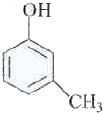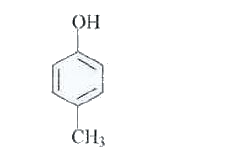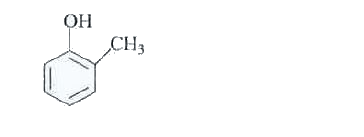Compound X (C5H10O) is a chiral alcohol. It is catalytically hydrogenated to an achiral alcohol Y (C5H12O) and oxidized by activated MnO2 to an achiral carbonyl compound Z(C5H8O). Compound X is
1-penten-3-ol
1-penten-2-ol
3-methyl-2-buten-1-ol
2-methyl-2-butene-1-ol
The correct Answer is:A
To identify compound X (C5H10O), which is a chiral alcohol, we can follow a systematic approach based on the transformations described in the question. Here’s a step-by-step solution:
Step 1: Understand the transformations
- Compound X is a chiral alcohol with the formula C5H10O.
- It is hydrogenated to form Compound Y, which is an achiral alcohol with the formula C5H12O.
- Compound Y is then oxidized to form Compound Z, which is an achiral carbonyl compound with the formula C5H8O.
Step 2: Determine the structure of Compound Z
- Since Compound Z is C5H8O, it must contain a carbonyl group (C=O).
- The general formula for a carbonyl compound (aldehyde or ketone) is CnH2nO. For C5, it should have H10, but since it has H8, it indicates that there is a double bond (C=C) present.
- A possible structure for Z could be a pentene with a carbonyl group, such as 3-penten-2-one.
Step 3: Identify Compound Y
- Compound Y is formed by the hydrogenation of Compound X. The addition of hydrogen (H2) to a double bond in Z would convert it to an alcohol.
- Since Y is C5H12O, it suggests that it is a saturated alcohol derived from Z.
Step 4: Determine Compound X
- To find Compound X, we need to reverse the oxidation of Y to Z. The oxidation of an alcohol typically involves the removal of hydrogen.
- If we consider that Y is a saturated alcohol, we can deduce that Compound X must have a double bond that can be hydrogenated to form Y.
- A suitable candidate for Compound X could be 3-pentanol (which is chiral).
Step 5: Verify with molecular formulas
- Check the molecular formulas:
- For X (C5H10O): 3-pentanol (C5H10O) is indeed chiral.
- For Y (C5H12O): The hydrogenation of 3-pentanol gives pentanol, which is achiral.
- For Z (C5H8O): The oxidation of pentanol would yield a carbonyl compound like 3-penten-2-one.
Conclusion
Based on the above deductions, Compound X is 3-pentanol.
---
- Compound X is a chiral alcohol with the formula C5H10O.
- It is hydrogenated to form Compound Y, which is an achiral alcohol with the formula C5H12O.
- Compound Y is then oxidized to form Compound Z, which is an achiral carbonyl compound with the formula C5H8O.
- Since Compound Z is C5H8O, it must contain a carbonyl group (C=O).
- The general formula for a carbonyl compound (aldehyde or ketone) is CnH2nO. For C5, it should have H10, but since it has H8, it indicates that there is a double bond (C=C) present.
- A possible structure for Z could be a pentene with a carbonyl group, such as 3-penten-2-one.
- Compound Y is formed by the hydrogenation of Compound X. The addition of hydrogen (H2) to a double bond in Z would convert it to an alcohol.
- Since Y is C5H12O, it suggests that it is a saturated alcohol derived from Z.
- To find Compound X, we need to reverse the oxidation of Y to Z. The oxidation of an alcohol typically involves the removal of hydrogen.
- If we consider that Y is a saturated alcohol, we can deduce that Compound X must have a double bond that can be hydrogenated to form Y.
- A suitable candidate for Compound X could be 3-pentanol (which is chiral).
- Check the molecular formulas:
- For X (C5H10O): 3-pentanol (C5H10O) is indeed chiral.
- For Y (C5H12O): The hydrogenation of 3-pentanol gives pentanol, which is achiral.
- For Z (C5H8O): The oxidation of pentanol would yield a carbonyl compound like 3-penten-2-one.
Based on the above deductions, Compound X is 3-pentanol.
Topper's Solved these Questions
- REDUCTION, OXIDATION & HYDROLYSIS REACTIONSBOOK - RESONANCE ENGLISHCHAPTER - REDUCTION, OXIDATION & HYDROLYSIS REACTIONSEXERCISE - Part-III : High Level Problems (Subjective Questions)
6 Videos
- REDUCTION, OXIDATION & HYDROLYSIS REACTIONSBOOK - RESONANCE ENGLISHCHAPTER - REDUCTION, OXIDATION & HYDROLYSIS REACTIONSEXERCISE - Only One Option Correct Type
4 Videos
- REDUCTION, OXIDATION & HYDROLYSIS REACTIONSBOOK - RESONANCE ENGLISHCHAPTER - REDUCTION, OXIDATION & HYDROLYSIS REACTIONSEXERCISE - Additional problems for self Practice (Part-1)
30 Videos
- PERIODIC TABLE & PERIODICITYBOOK - RESONANCE ENGLISHCHAPTER - PERIODIC TABLE & PERIODICITYEXERCISE - ORGANIC CHEMISTRY(BASIC CONCEPTS)
27 Videos
- S BLOCK ELEMENTSBOOK - RESONANCE ENGLISHCHAPTER - S BLOCK ELEMENTSEXERCISE - ORGANIC CHEMISTRY(Biomolecules & Polymer)
4 Videos
Similar Questions
Knowledge Check
A compound 'A' (C7H8O) is insoluble in water, dilute Hcland aqueous NaHCO3 but soluble in dilute NaOH. When Ais treated with Br2−H2O, it is converted into a compound of formula C7H5Obr3. Compound A is :
A B
B C
C D
D
A compound C6H14O2 has two tertiary alcoholic groups . The IUPAC name of this compound is
A2,3-dimethyl -1, 2 - butanediolB3,3-dimethyl - 1 , 2 - butanediolC2,3-dimethyl-2 , 3-butanediolD2-methyl-2 , 3- pentanediol .
An organic compound 'A'(C4H10O) is optically active. On mild oxidation, it gives a compound 'B'(C4H8O) but upon vigorous oxidation, it gives another compound 'C'(C3H6O2). The compound 'C' along with 'D' are also formed from 'B' by reacting with iodine in the presence of alkali. Deduce the structures of 'A','B','C' and 'D'.
View SolutionCompound having molecular formula C5H12O cannot show
View SolutionCalculate the O.N. of all atoms in following compounds : -
C2H5OH
View SolutionA compound (X) with the molecular formula C3H8O can be oxidized to another (Y) whose molecular formula is C3H6O2
The compound (X) may be
View SolutionAn optically active compound H(C5H6O) on treatment with H2 in the presence of Lindlar's catalyst gave a compound I (C5H8O). Upon hydrogenation with H2 and Pd/C, Compound H gave J (C5H12O). Both I and J were found to b optically inactive. Select the correct statements.
View SolutionHow many alcohols give immediate turbidity with Lucas reagent having molecular formula (C5H12O) :
View Solution
